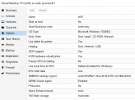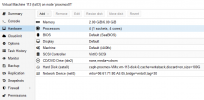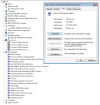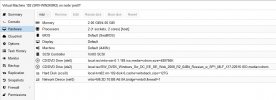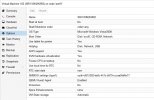Hi, guys!
Can you tell me what latest VirtIO drivers support Windows 7/2008 R2? I trying install drivers from latest iso (0.1.189), but when installing drivers for:
Thus, I came to the conclusion that driver support for guest OS 7 /2008R2 is discontinued in proxmox 6.2 and I need latest drivers supporting these OSes.
P.S. I know, that supporting of this OSes are ended, but such are techical requirements.
P.P.S. In addition, usb passthrough is also not working on 7/2008R2 (on Windows 10 all ok).
P.P.P.S. Sorry for my english.
Can you tell me what latest VirtIO drivers support Windows 7/2008 R2? I trying install drivers from latest iso (0.1.189), but when installing drivers for:
- Balloon - I get a BSoD (balloon.sys+wdf01000.sys)
- PCI Simple Communications (VirtIO Serial driver) - driver installed with Code 10 (not starting)
- virtio-win-gt-x64.exe - failed with "OS must be Windows 8, Windows Server 2012 or higher" message.
Thus, I came to the conclusion that driver support for guest OS 7 /2008R2 is discontinued in proxmox 6.2 and I need latest drivers supporting these OSes.
P.S. I know, that supporting of this OSes are ended, but such are techical requirements.
P.P.S. In addition, usb passthrough is also not working on 7/2008R2 (on Windows 10 all ok).
P.P.P.S. Sorry for my english.


